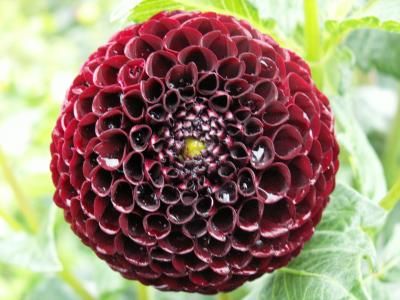
How Rare Black Dahlias Get Their Color

Of the 20,000 varieties of dahlia flowers, only 10 to 20 kinds are black in color. Now researchers say they've solved the molecular mystery of how these rare flowers get their dark hues.
Flower color in dahlias is determined by a mixture of plant metabolites called flavonoids. Scientists already know that red dahlias' tones come from high concentrations of anthocyanins, flavonoids that are responsible for the color of blueberries, blue corn, blackberries and other fruits and vegetables. White dahlias, meanwhile, are short on anthocyanins but contain large amounts of flavones, flavonoids that are colorless themselves but can alter the shade of a flower by interacting with pigments like anthocyanin.
Researchers from the Vienna University of Technology in Austria analyzed the pigments, enzyme activity and gene expression in samples of black dahlias to study their deep burgundy hues. Compared to most varieties, black dahlias have huge amounts of anthocyanins and drastically reduced concentrations of flavones, confirmed by the flowers' low flavone synthase II (FNS) isoenzyme activity, the researchers found.
But the color of black dahlias is not simply due to increased activity of the plant's anthocyanin pathway, rather molecular intermediates that would normally form flavones are converted into extra anthocyanins, the team found.
The findings suggest there could be a way to engineer dahlias with tailor-made flavone contents to produce specific colors.
"The strategy of bypassing flavones into anthocyanins is a new approach," study researcher Heidi Halbwirth told LiveScience in an email. Halbwirth added that understanding how the black dahlia manages to knock out the FNS isoenzyme activity could improve techniques for flower breeding and could be used to develop a marker for the color change.
The research is detailed online Nov. 23 in BioMed Central's journal BMC Plant Biology.
Sign up for the Live Science daily newsletter now
Get the world’s most fascinating discoveries delivered straight to your inbox.
Follow LiveScience on Twitter @livescience. We're also on Facebook & Google+.










